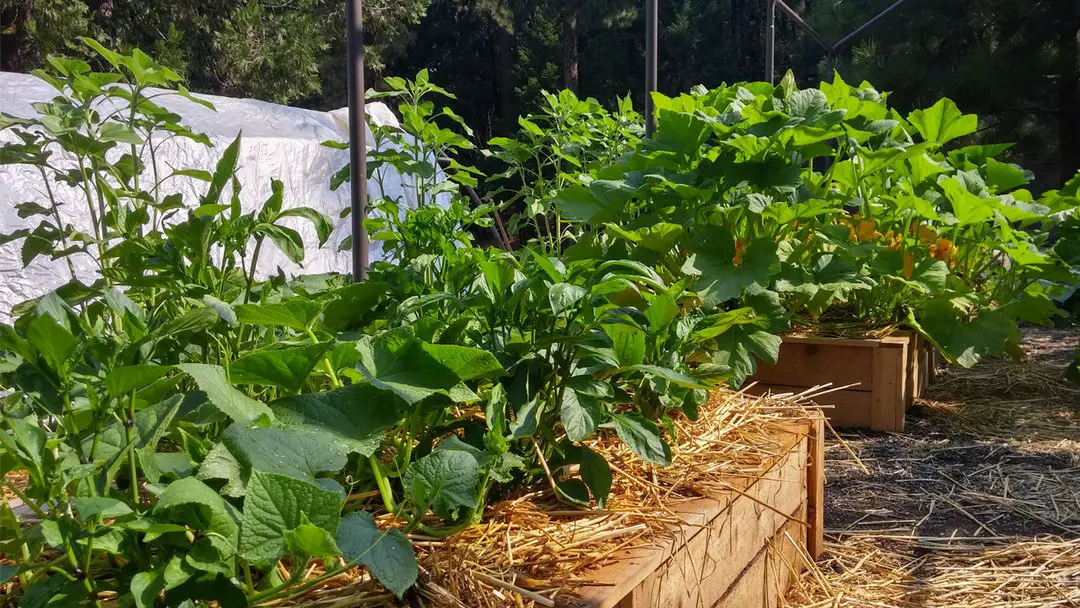Tillage makes it easier to include fertilizers and plant small seeds. It also accelerates the decomposition of any plant matter you bury within the process. Plus it’s satisfying to ascertain the weeds disappear once you turn them under. But what if you’ll have a healthy, productive garden without having to lift a shovel ever again, with fewer weeds than you’ve got now?

A growing number of gardeners are discovering that such a dream garden is feasible. Their secret is using no-till methods. There are many additional benefits to your garden once you stop digging.
A no-till garden promotes a healthy soil food cycle. once you dig, you disrupt the fragile structure of the soil that has been permeated by worm tunnels, woven with mycorrhizae, and populated by colonies of beneficial organisms of all sizes. No-till methods encourage earthworms and other helpful soil dwellers to flourish.
A no-till garden is claimed to possess fewer pests, probably thanks to the healthy micro-ecosystem in and above the soil which doesn’t need to “start from scratch” after every spring or fall dig. Pests are further discouraged in no-till gardening by implementing crop rotation.
A no-till garden reduces weed populations. this is often because tillage can actually encourage weeds to sprout by exposing previously buried, dormant seeds to a far better environment for growing. Tillage also exposes the soil itself, removing natural competition. Further, the heavy mulch during a no-till garden keeps most weed seeds from sprouting.
A no-till garden uses less water. this is often accomplished with heavy layers of mulch which lessens evaporation and shades the soil, keeping it cooler within the hot summer sun. In fact, no-till gardens should be watered less because overwatering will encourage weeds and cause soil compaction.
Starting Your No-Till Garden
To start your no-till garden, some gardeners will actually begin by digging or double-digging the soil once (and only once! This step won’t be repeated in future years).
Others never dig in the least, simply laying down multiple layers of cardboard or newspaper on unworked soil or maybe over an existing lawn, then topping it with a thick layer of compost and mulching with straw. (Learn more about this method in our video on Lasagna Gardening).
If you’ve got good soil already and are just transitioning to no-till, you’ll skip the cardboard layer.
Lay down your paths and beds immediately. they’re going to be a permanent feature. you ought to never walk on the beds because you’ll compact the soil—and with this method, you can’t dig it to fluff it copy again!
If your beds are too wide to succeed in the center, lay down a narrow board within the middle or stepping stones periodically within the bed.
If you’ll be using drip irrigation, install that now, so it can water the soil directly, and therefore the mulch above the irrigation will help keep moisture from evaporating. Drip irrigation is that the preferred thanks to water a no-till garden, thanks to its efficient water distribution which it won’t compact the soil.
Mulch heavily, a minimum of eight inches and the maximum amount as two feet deep. Straw is the best mulch for no-till. Hay is more likely to drop weed seeds. Leaves, grass clippings, finished compost, mulched yard waste, and forest duff also can be used.
Some no-till gardeners only use compost for mulch, during which case it might only be layered an in. or two deep. Others use an in. of compost topped with a full layer of straw or other bulky mulching material. Either method will provide the advantages of no-till gardening, try them both call at different parts of your garden and see which works better for you! Whichever mulch you employ, it’ll decompose over time, so you’ll get to replace it whenever it gets thin to stop the soil from becoming bare and exposed.
Planting and Feeding Your No-Till Garden
Fertilizers, compost, and other amendments are often applied by fertilization, foliage feeding, and fertilization. To plant your beds, just keep off the mulch enough to plant each seed or transplant. Leave the mulch on the beds everywhere in between. Your veggies will get older within the gaps you’ve made within the mulch, and therefore the remainder of the bed’s soil will thrive under the layers of compost and straw. In your first year of no-till gardening, your garden could also be less productive than you’d like, especially if you’re ranging from scratch. Don’t worry! Things will improve the second year, once your soil features a chance to adapt and improve with the new method. Just pull or chop whatever weeds manage to grow through the mulch weekly to stay them from getting to seed, and therefore the rest will lookout of itself. within the winter, mulch again with the maximum amount as two feet of straw or your favorite mulching material. rather than straw, cover crops could also be wont to discourage weeds and to feed the soil over winter. it’s also an honest alternative to a winter layer of mulch if that method results in rodent problems in your garden. For no-till gardens, never use a canopy crop that contains grass. When you’re able to remove the duvet crop, either hand pull, solarize, or cut it as low as possible (the stubble will decompose over time like mulch). When spring comes again, add more mulch as required to replenish what has decomposed over winter, in order that your mulch layer remains a minimum of eight inches and up to 2 feet deep. Then just plant and grow!
